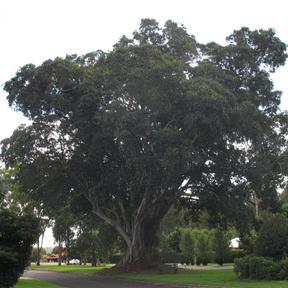Level of Significance
- File
- Local
- Regional
- State
- National
Age (approx)
200yrsTrees
1Diameter
3mHeight - 30m


Details
- Outstanding species (Scientific)
- Landscape (Social)
- Landmark (Social)
- Park/Garden/Town (Historic)
- Person/Group/Institution (Historic)
- Attractive (Aesthetic)
- Species/Location (Aesthetic)
Statement of Significance
The rich, fertile soil, temperate climate, and the interest of many of its citizens in things botanical, has resulted in the Toowoomba Region’s ability to grow a wide range of indigenous and non-indigenous plants. In 1860, the area was the first to hold an Agricultural Show in Queensland – 15 years before Brisbane. Walter Hill, the then Government Botanist and first curator of the Brisbane City Botanic Gardens, travelled to Toowoomba to advise with the design and planning of Queen's Park and street plantings in Toowoomba. He subsequently imported many tree species from Europe, Asia and other parts of the world to be planted there. Hill Street in Toowoomba is named in his honour. The town attracts many visitors in September for its famous Carnival of Flowers, where people come from near and far to enjoy Toowoomba’s many parks and gardens.
The area was developed as gardens, orchards and plant nursery (presumably from native bushland – the area is naturally softwood scrub with eucalypts) by the eminent early Toowoomba horticulturist, botanist and Theosophist Mr Carl Heinrich Hartmann in the late 1800s. The presence of the tree with the locally rare or extinct blood vine (Austrosteenisia blackii) (F.Muell.) Geesink) throughout its branches tree suggests to local botanists that this is probably a forest remnant saved by Mr Hartmann rather than a seedling planted by him.
The tree is an outstanding example of its species, is an important landmark and makes a significant contribution to the landscape of this historic town. It is believed to be a remnant of native vegetation and is associated with the eminent early Toowoomba horticulturist, botanist and Theosophist Mr Carl Heinrich Hartmann, who probably saved this remnant. It is a majestic looking tree and a better than average example of its species in this location.
The tree is located at the eastern end of the central grassy treed area.







